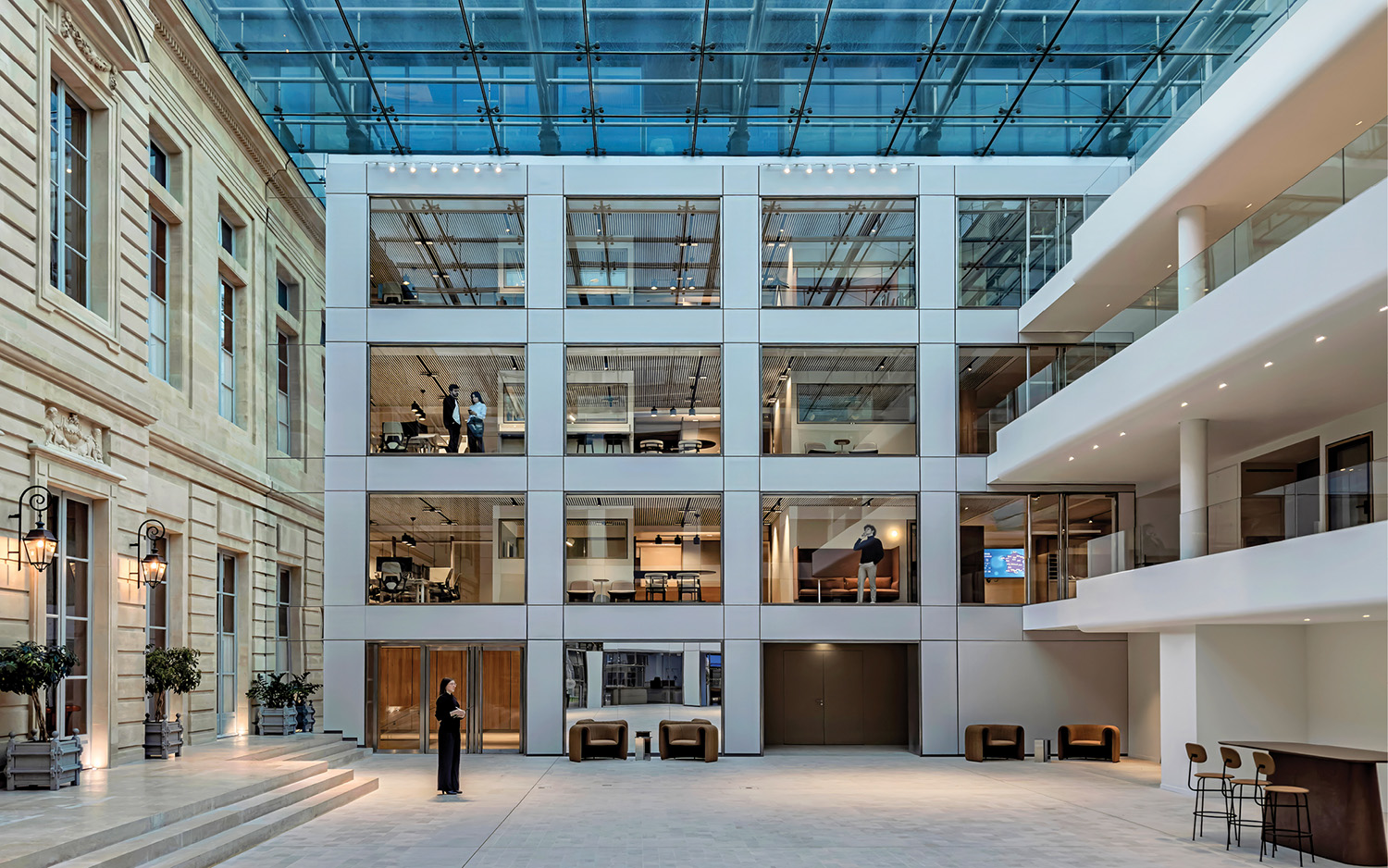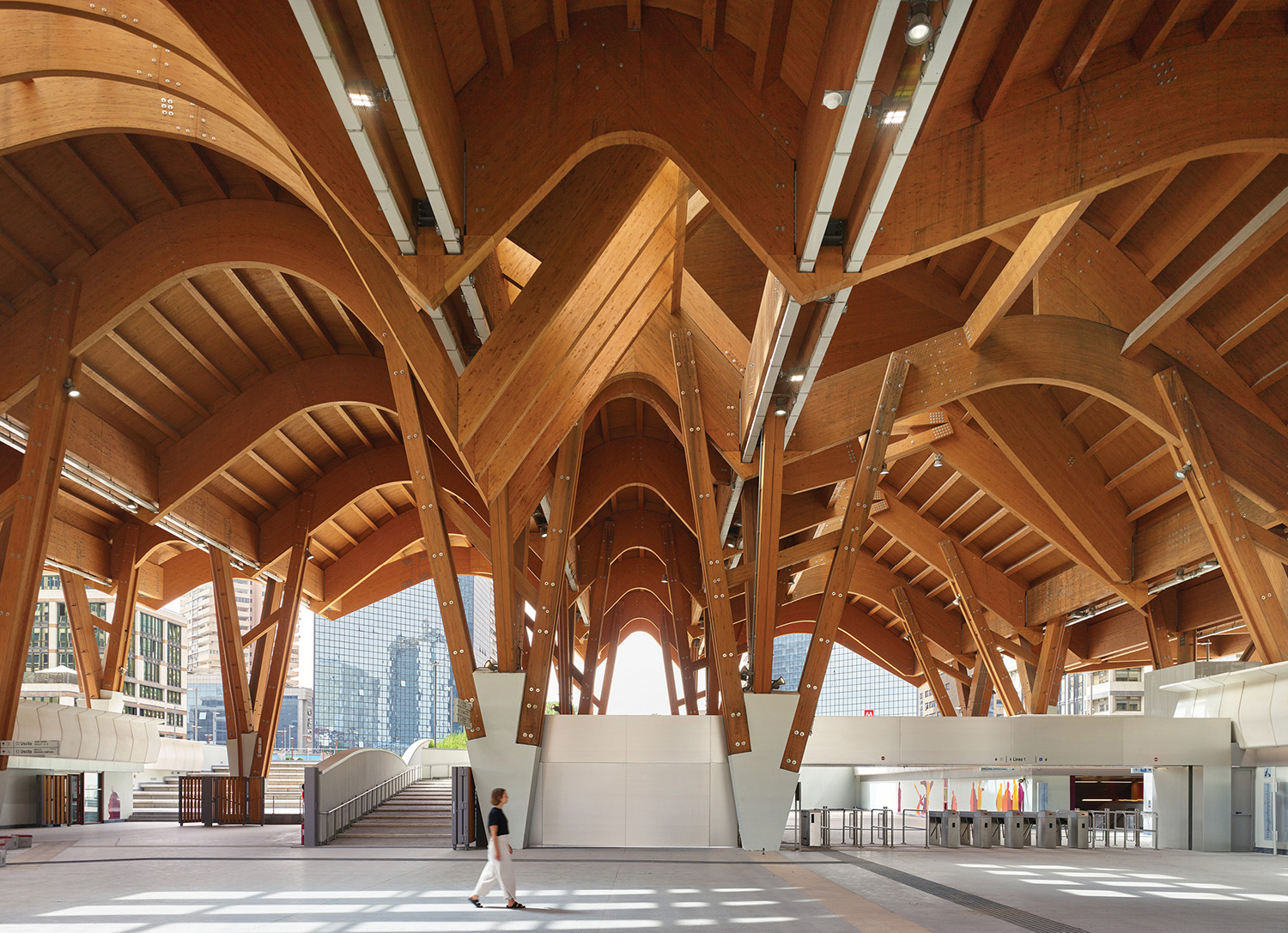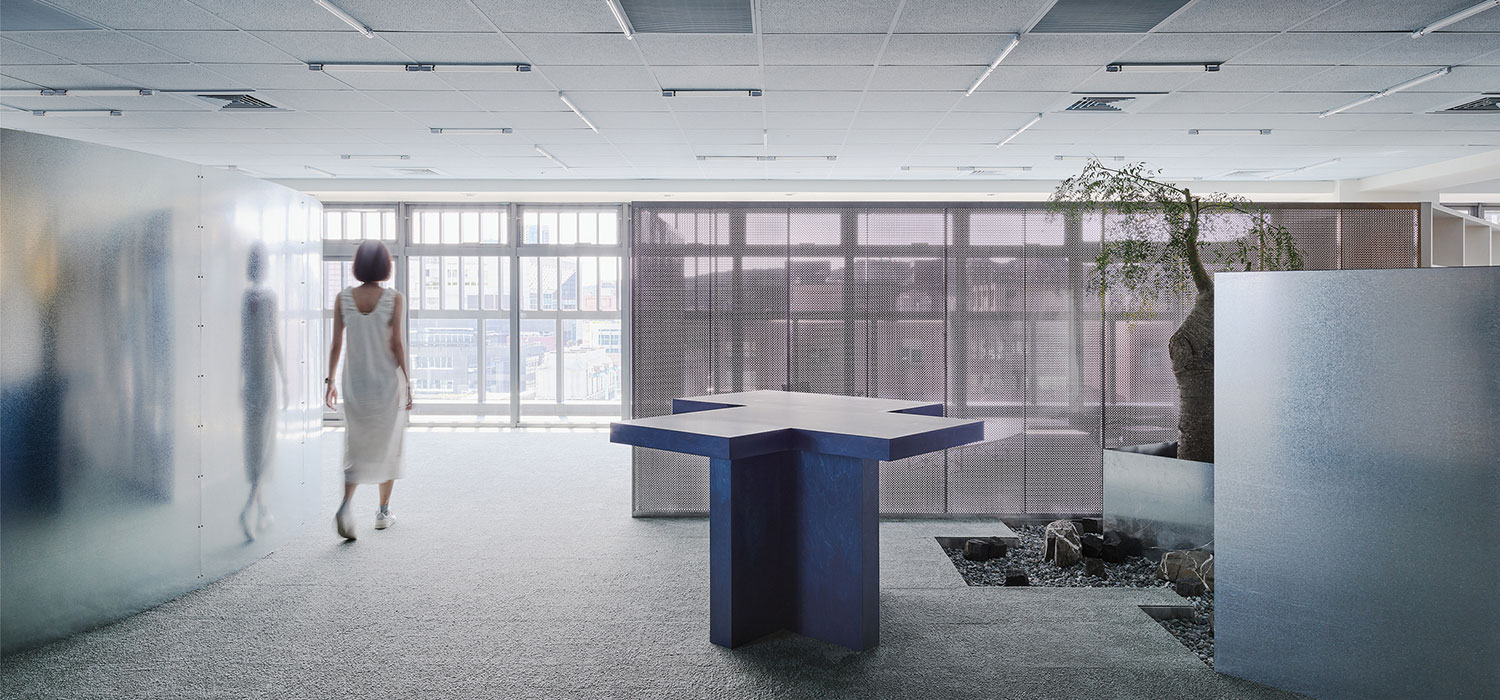SpaceContinuum Design Studio Transforms Sharjah’s The Flying Saucer into a Cultural Space

Close in radius to Dubai and Abu Dhabi, United Arab Emirates’s third largest state Sharjah is far from its gilded neighbors in its landscape. Here, modest scale colorful buildings and walkable streets lead to a tranquil seaside stretched across the Persian Gulf. The cultural fabric, however, is a standout in the region. Sharjah Art Foundation spearheads an ambitious year-long program, including a cutting-edge art biennial, nestled across the city’s intact texture. Internationally-attended citywide gatherings also provide an opportunity to repurpose the city’s dormant buildings.

Built in the mid-1970s, the Flying Saucer is one of the sites SAF has been using for programming since acquiring the multipurpose building in 2012. “We felt it was essential to preserve it as an asset for future generations,” Hoor Al Qasimi, who established the art foundation in 2009, tells Interior Design. The Brutalist landmark’s unmistakeable form is defined by a 16-point star-shaped roof, crowned with a central concrete dome. Underneath, a structure composed of V-shaped pillars form a circle around low height windows and completes the building’s resemblance to an alien vehicle. The foundation’s motivation behind a recently-completed renovation is sentimental as well as utilitarian: “The Flying Saucer has a special place in my memory as it does for many who grew up in Sharjah.”

The Sharjah Art Foundation architecture department and UAE-based firm SpaceContinuum Design Studio spearheaded the restoration, which focused on catering to SAF’s vision to expand its cultural calendar across the building. The firm’s founder Mona El Mousfy explains the challenge they faced to Interior Design as “restoring the architecture and spatial integrity of the Saucer while adapting it to a new hub for artists, creatives, and the general public.” In fact, the foundation has been gradually bringing the Saucer to its original form by removing changes made by its former occupants, but this current restoration completes their overall goal. An annex attached to the original structure by a former restaurant is removed to reveal a 24-foot-high dome. The parking lot is transformed into an open-air space, named Platform, to carve a larger space for events, which also continues at another new community space, Launching Pad, on the lower level. In addition to a café overlooking the sunken courtyard, Green Crater, and a library, this section is planned for film screening and workshops and features multipurpose café furniture for hosting creative activities. El Mousfy particularly notes the the swivel chairs, which can be turned around to face the faceted Saucer walls that double as projection screens. She also underlines the critical dialogue between Launch Pad and the Saucer in terms of “spatial configuration, day lighting and material expression.” The architect says Launch Pad equally embraces and contrasts with the characteristics of the overall Saucer, noting: “Saucer has a radial symmetrical shape and fully open façade, but the ‘Launchpad’ has fluid spatial characteristics and limited outside views.” Another elegant variance is in the overall color palette. “The neutral palette of concrete floors, cement ceiling and white stained concrete peripheral walls is counterpointed by the color and materiality of the furniture pieces,” she says, referring to green swivel chairs and yellow, white and grey low poufs dispersed around the site.

The augural program does justice to the Saucer’s new life with artists Lindsay Seers and Keith Sargent’s ambitious multimedia installation Nowhere Less Now3 [flying saucer]. In addition to sculptures, the work’s central medium is a film which uses the building’s extraterrestrial structure to convey issues on British colonialism and cultural oppression while raising questions around multiple notions of the other and alien.





